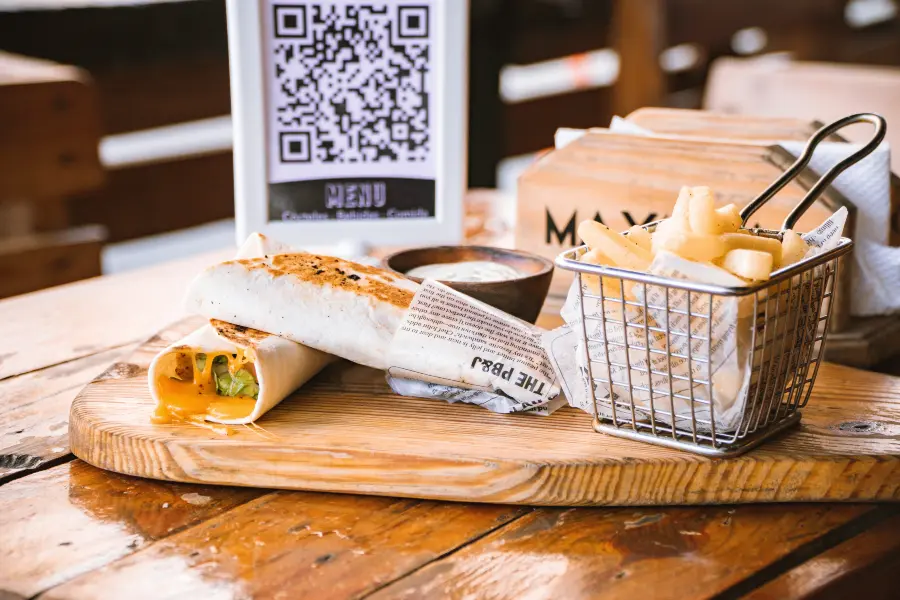QR Codes for Restaurants: The Ultimate Guide to Contactless Menus and More
Published on

The New Standard in Dining: The Rise of the QR Code
Walk into almost any modern restaurant, café, or bar, and you'll likely find a small, square QR code on the table. What started as a public health necessity has evolved into a permanent and powerful tool for the hospitality industry. For restaurant owners and managers, understanding how to effectively use QR codes for restaurants is no longer optional; it’s essential for streamlining operations, enhancing the guest experience, and even boosting profits. This isn't just about replacing paper menus—it's about revolutionizing the entire dining journey.
This ultimate guide will cover everything you need to know, from creating the perfect contactless menu to using QR codes for ordering, payments, feedback, and marketing. Let's explore how you can leverage this simple technology to make your restaurant more efficient and customer-friendly.
Part 1: The Contactless QR Code Menu
The most common use of QR codes in restaurants is the digital menu. By placing a QR code on each table, you allow guests to view your full menu on their own smartphones instantly.
Benefits of a QR Code Menu:
- Cost Savings: It drastically reduces or eliminates the significant costs associated with printing, reprinting, and laminating paper menus.
- Instant Updates: Did you run out of an ingredient or want to add a daily special? You can update your digital menu in real-time without the hassle of reprinting. This is perfect for managing 86'd items or promoting seasonal dishes.
- Enhanced Hygiene: It removes a major physical touchpoint, providing a more hygienic experience for both guests and staff.
- Richer Content: A digital menu isn't limited by paper size. You can include vibrant, high-quality photos of every dish, list detailed ingredients and allergen information, and even link to videos of your chef preparing a signature item.
How to Create a QR Code for Your Menu:
- Create Your Digital Menu: First, create your menu online. This could be a simple, mobile-friendly page on your existing website or a dedicated menu page created with a specialized service. A PDF hosted online also works, but a webpage is often a better mobile experience.
- Generate the QR Code: Go to a QR code generator like QRDesigner.com. Select the "URL" type and paste the link to your digital menu.
- Customize and Download: Customize the QR code with your restaurant's colors and logo to make it look professional. Download it as a high-quality SVG or PDF file for printing.
- Print and Place: Print the QR code on durable materials (like table tents, coasters, or small plaques) and place one on each table with a clear call to action, such as "Scan for Menu."
Part 2: Beyond the Menu – Advanced Restaurant QR Code Uses
A truly smart restaurant uses QR codes for more than just viewing the menu. Here are other powerful applications to enhance the dining experience.
QR Code for Wi-Fi Access
Stop spelling out your complex Wi-Fi password for every guest. Create a Wi-Fi QR code that allows customers to connect to your network with a single scan. It’s a small touch of hospitality that makes a big difference.
QR Code for Ordering and Payments
Take it a step further with "Order at Table" functionality. The QR code can link to a platform where guests can not only view the menu but also place their order and pay their bill directly from their phones. This can speed up table turnover, reduce staff workload during busy periods, and improve order accuracy.
QR Code for Customer Feedback
Want to know what your customers really think? Place a QR code on the receipt or table that links to a simple feedback form. This makes it easy for guests to share their experience while it's still fresh in their minds, giving you valuable insights to improve your service.
QR Code for Loyalty Programs and Marketing
Use a QR code to grow your marketing list. A code at the checkout counter could link to your loyalty program sign-up page or offer a discount on a future visit in exchange for an email address. It’s a great way to turn one-time visitors into repeat customers.
Best Practices for Using QR Codes in Your Restaurant
To ensure a smooth experience, follow these best practices for your QR codes for restaurants.
| Best Practice | Explanation |
|---|---|
| Ensure Durability | Print your QR codes on materials that can be easily cleaned and withstand spills, such as acrylic blocks, laminated cards, or metal plaques. |
| Provide Clear Instructions | Always include a simple call to action like "Scan Here for Our Menu & To Order." Don't assume every guest is familiar with the process. |
| Offer a Backup | Always have a few physical menus on hand for guests who may not have a smartphone or are less comfortable with the technology. Inclusivity is key to good hospitality. |
| Test Your Codes Regularly | Periodically scan the codes at different tables to make sure they are working correctly and the link to your menu hasn't changed or broken. |
Conclusion: The Essential Tool for the Modern Restaurant
The use of QR codes for restaurants has fundamentally changed the dining landscape for the better. They offer a powerful combination of operational efficiency, cost savings, and an enhanced, modern guest experience. From contactless menus and seamless ordering to valuable feedback collection, QR codes empower restaurant owners to run a smarter, more responsive, and more profitable business.
By embracing this technology and integrating it thoughtfully into your service flow, you position your restaurant as a forward-thinking establishment that prioritizes customer convenience and safety.
Ready to upgrade your restaurant’s dining experience? Visit QRDesigner.com to create your free, professional, and beautifully branded QR codes for your menus, Wi-Fi, and marketing today.
